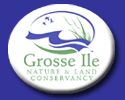

LAWN CARE TIPS FOR REDUCING PESTICIDE USEU.S. EPA REGION 5 NEWS RELEASE No. 04-OPA050
CONTACT:Kären Thompson, (312) 353-8547CHICAGO (April 21, 2004)
Spring is here!!!
The grass is growing and plants are emerging. It's the time of year when consumers are bombarded with advertisements for products to control a variety of annoying weeds and insect pests. U.S. Environmental Protection Agency's pesticide programs caution homeowners against using pesticides as the first line of defense without considering other approaches.
Here are some tips for maintaining a healthy yard while minimizing your
use of pesticides:
- Select the Right Plants for the Right Location - Learn about soil, moisture and light conditions in your yard and select plants with requirements that match those conditions. Consider native plant species that require less water, fertilizers, and pesticides. Use disease and insect-resistant varieties and avoid invasive plant species.
- Water Properly and Only When Necessary - Water plants according to their specific requirements. Water lawn slowly and to the depth of the root zone. Plant drought tolerant species if possible (like native flowers and grasses).
- Mow High and Often - Maintain sharp mower blades and cut grass so it is two to three inches tall. Remove no more than one-third of the height of the grass blades at each mowing and leave clippings in place -- it's free fertilizer!
- Identify and Learn About Pests - Identify each pest correctly and understand its lifecycle to determine the best control method. Get help from your local county cooperative extension service.
- Use Cultural and Physical Methods to Remove or Prevent Pests - Dethatch your grass in the spring; pull weeds and pick bugs off by hand; use mulch around plants and trees to suppress weeds and keep in moisture.
- Select Least Toxic Alternatives - Pesticide labels say "Caution," "Warning," or "Danger," which tell you how hazardous or poisonous the product is. "Caution" means the least hazardous so choose products labeled "Caution" when possible.
- Read and Follow
Pesticide Labels for Use and Disposal - Spot-treat areas whenever
possible instead of applying a product to the whole yard, which is wasteful
and can be environmentally damaging. Remember, using more of a product
is not better!